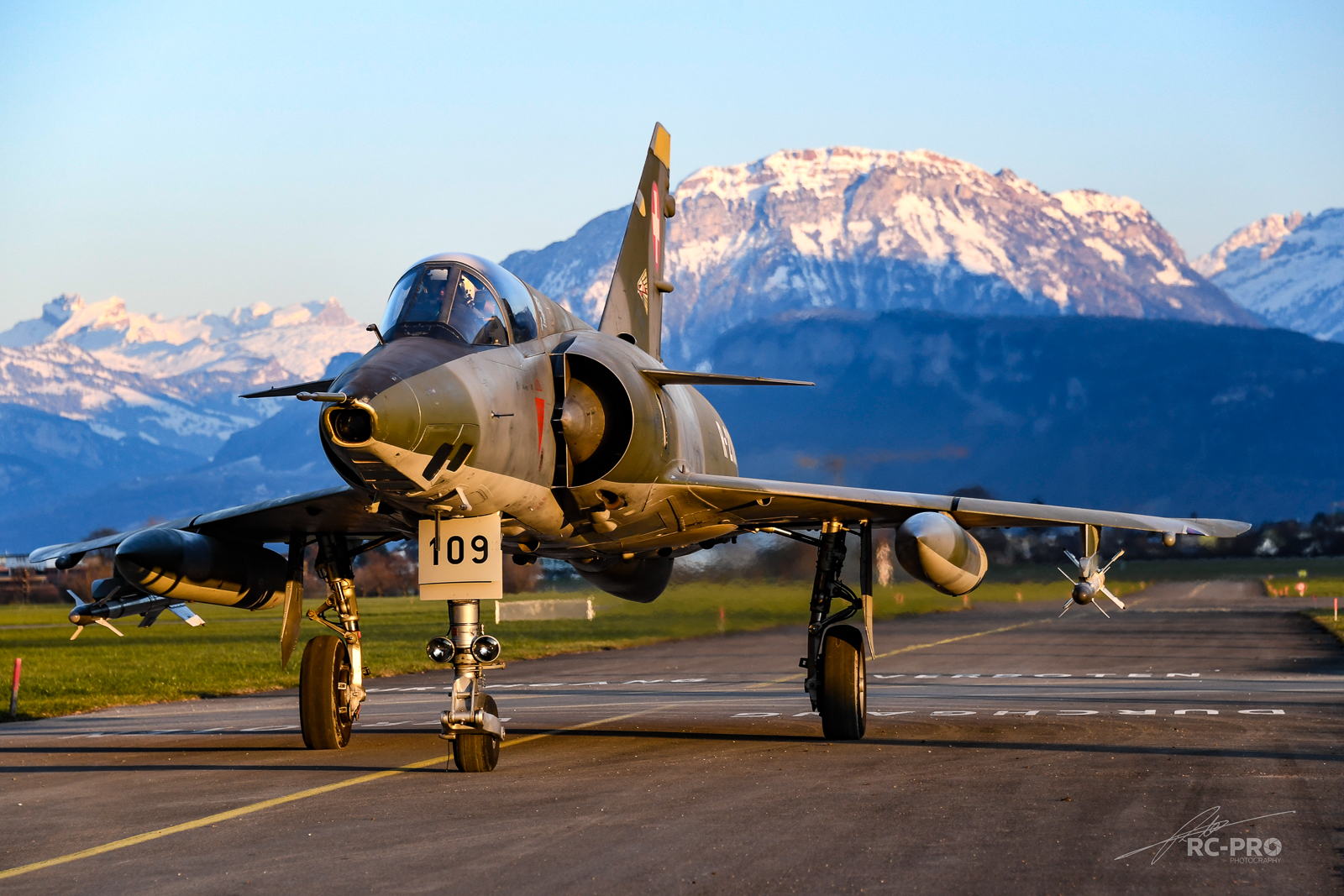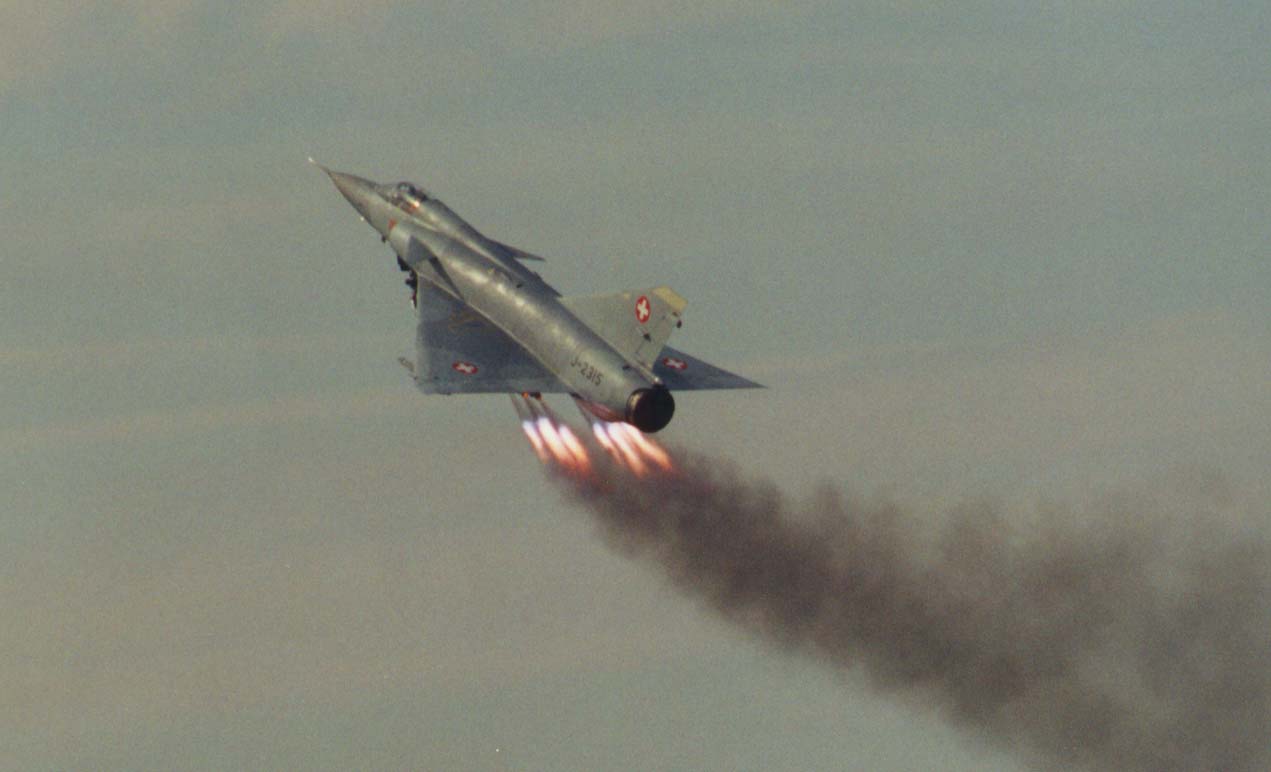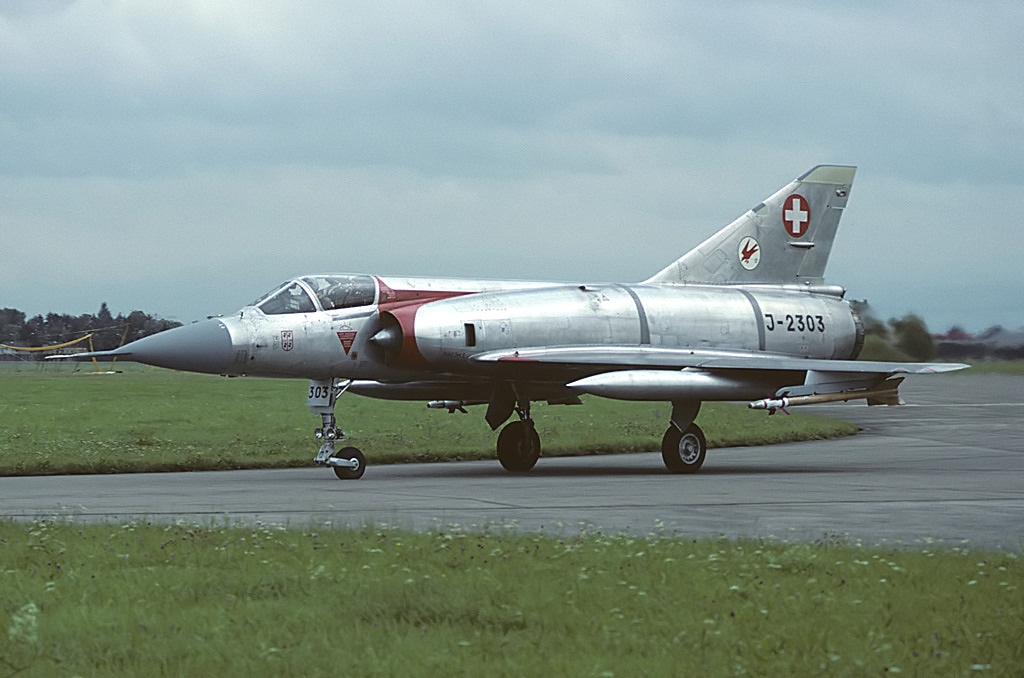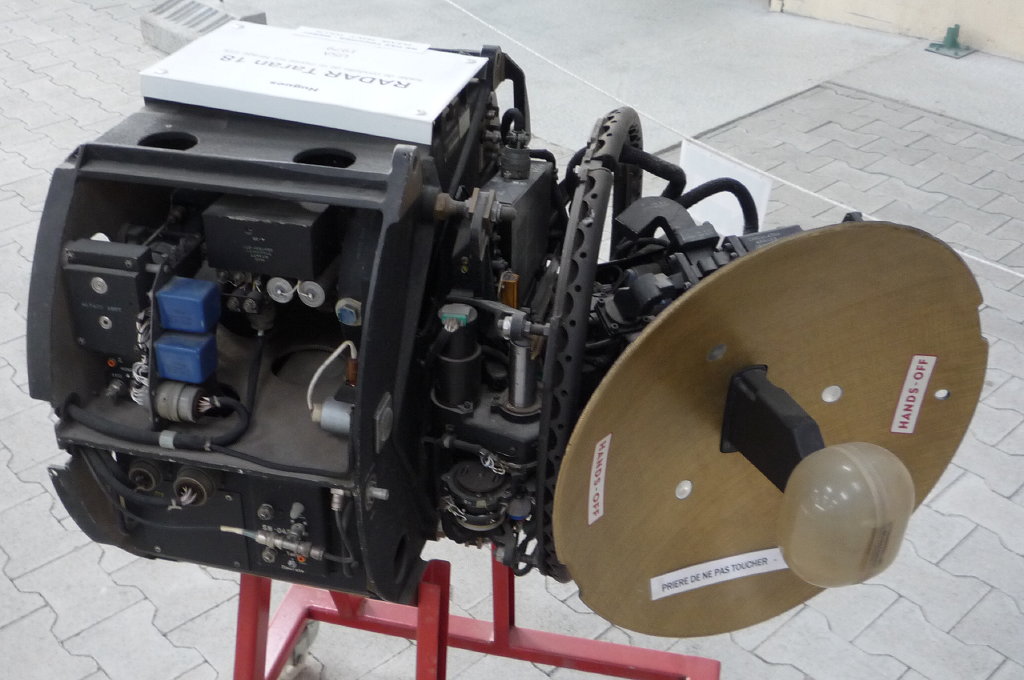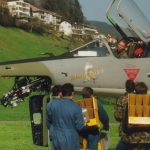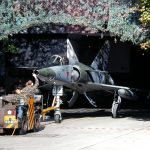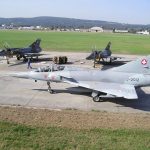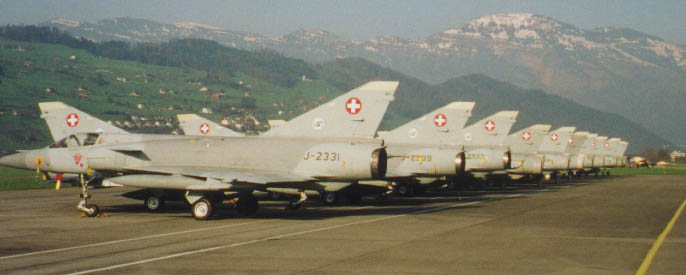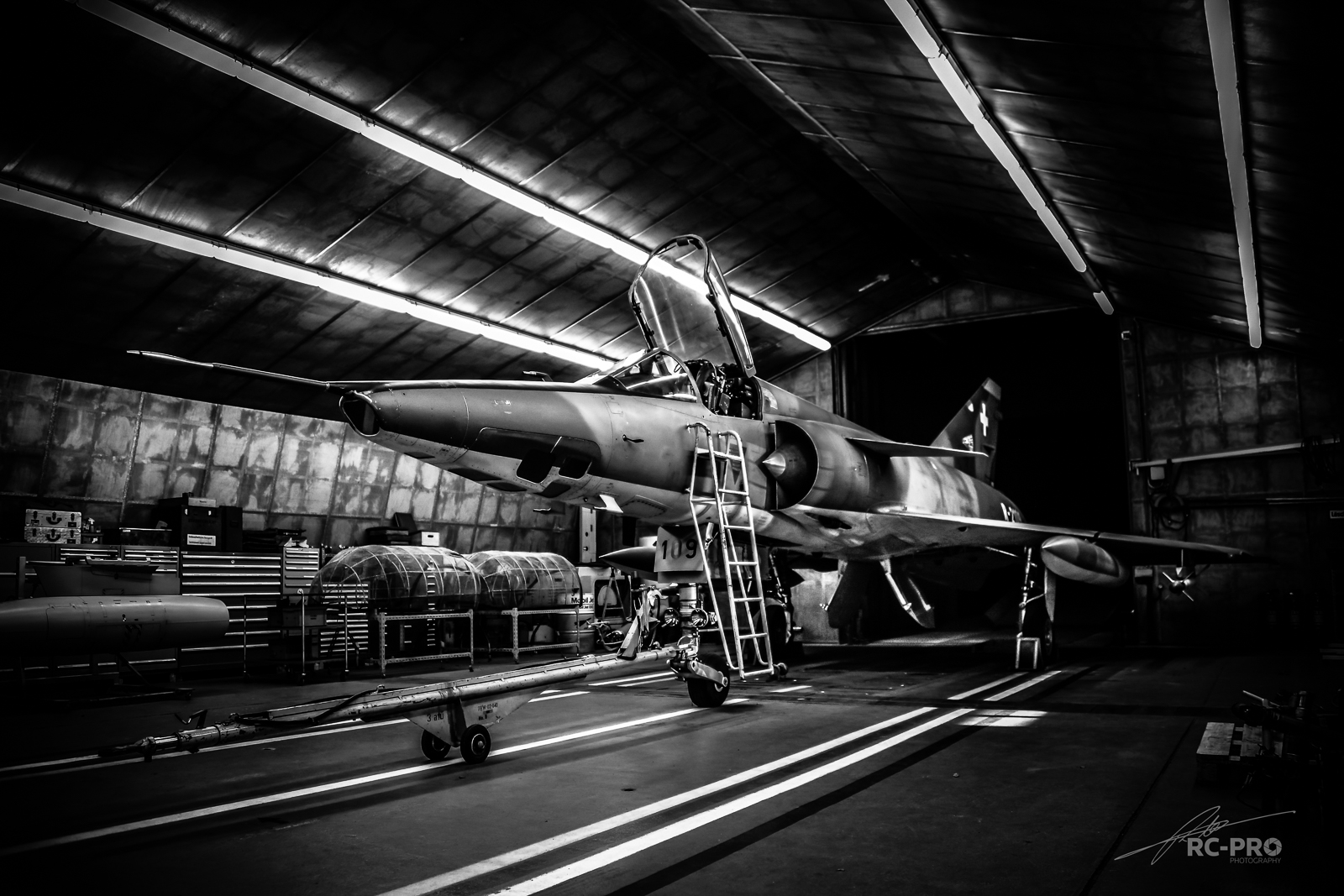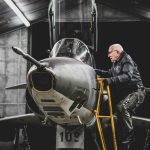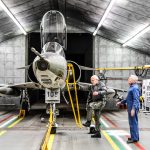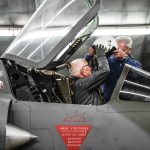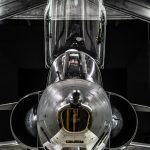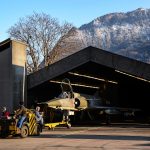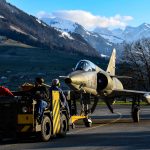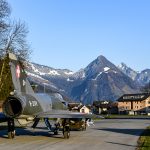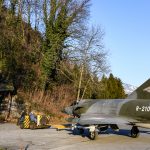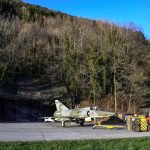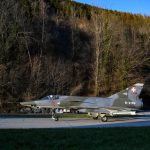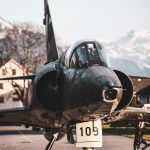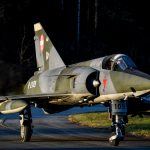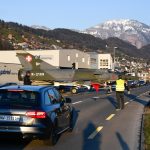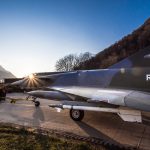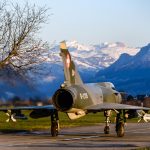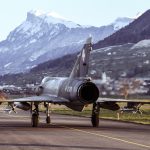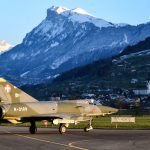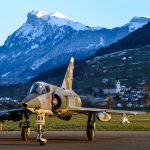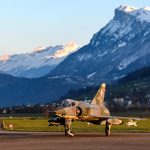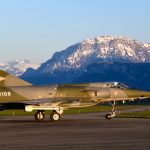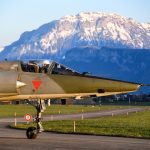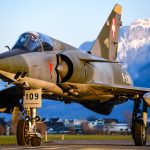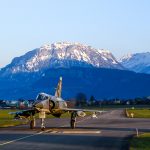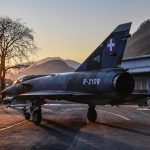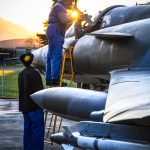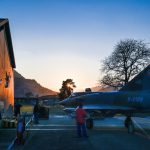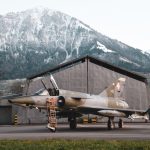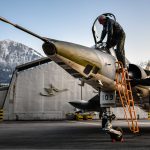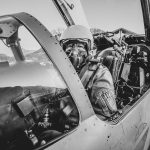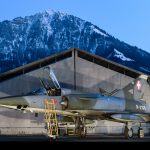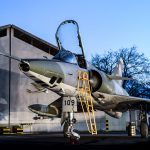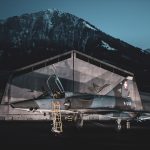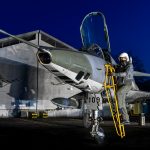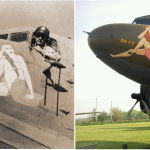The Dassault Mirage is one of the most iconic combat aircraft designs of its era, and while the type has virtually disappeared from the skies today, with only Pakistan’s air force still operating them on the front lines, there are still passionate devotees for the type. Our very own Stephen Chapis has provided this wonderful article, magnificently illustrated by Rich Cooper, which describes both the the history of the type in Switzerland and the efforts of Mirage-Verein Buochs, a small Swiss organization which is keeping this exquisite design and its history alive in the public eye – We feel sure you will all enjoy this story …
Alpine Mirage – A Former Swiss Air Force Mirage IIIRS Still Roars!
by Stephen Chapis
The Dassault Mirage III dates back to the early 1950s and therefore possesses the quintessential design element of so many Cold War jet fighters of that period – the delta wing. Aircraft such as the Convair F-106, MiG-21, and Saab Draken so exude the sense of immense speed – even standing still. The passage of a half-century has done little to diminish their powerful aura. When one remembers that the Mirage IIIA was the first Western European fighter to exceed Mach 2.0 in level flight, it clearly has the performance to back up its sleek looks. Indeed, the Mirage III proved itself in combat during numerous conflicts, including the decades-long South African Border War (1966-1990) and the Falklands War (1982), but perhaps more importantly, in the Middle East during The Six-Day War (1967), War of Attrition (1967-1970), and Yom Kippur War (1973) where Israeli Air Force pilot Giora Epstein scored 17 aerial victories while flying Mirage IIIs and IAI Neshers (an Israeli variant of the Mirage 5).
In Switzerland, the type’s history began in 1958 when the Federal Council canceled their order for the indigenously-designed FFA P-16 ground-attack fighter. In 1959, a new doctrine emphasizing air defense capabilities was presented in the nation’s Parliament. As part of this fresh strategic concept, a new combat aircraft underwent testing, although its evaluation had already begun in 1957. A number of aircraft from Britain, Italy, Sweden, and the United States took part in the competition, but by November 1960, just two designs remained on this list; the Saab J-35 Draken and Dassault Mirage III. A month later, the Swiss government selected the Mirage. By the next year, Switzerland’s Federal Council had approved a procurement loan of CHF 871 million for 100 Mirage IIIS/RS/BS combat aircraft. In 1962, the Swiss received a single Mirage IIIC for weapons testing, and two years later they acquired a brace of two-seat Mirage IIIBSs for pilot training and retraining.
However, the procurement process for the Mirage was not without turmoil. To keep the manufacturing base within the country (Switzerland has a robust aircraft industry), the Swiss produced their Mirages under license at the Federal Aircraft Factory F+W Emmen and other facilities within the nation. Additionally, the basic Mirage III had to be adapted and modified to comply with the unique Swiss Air Force fighter aircraft operation out of mountain caverns. For instance, they had to have hoist points for overhead crane maneuvers in the confined spaces underground and JATO-capability for taking off from short airstrips. The Swiss also decided against the installation of standard French equipment in their Mirages.
For instance, Swiss-built Mirages IIIS fighters dropped the original (under-performing) Cyrano IIbis radar coupled with its Matra R.530 radar-guided, air-to-air missile in favor of the American Hughes TARAN-18 radar with late-model AIM-4 Falcon and AIM-9 Sidewinder air-to-air missiles.
This major design alteration required the modification of the standard Mirage IIIC airframe into the longer IIIE airframe with ATAR 9C engines. Of course, this option, plus other factors, demanded a bigger budget – leading to an additional loan application of over CHF 576 million – a 66% expansion over the original request! The Swiss Parliament balked at this dramatic increase. They rejected the budgetary request in late 1964, although they did grant an additional loan of CHF 150 million in the following year. While this did allow for the upgrades to occur, it forced a reduction in overall airframe acquisition down from 100 to just 57 examples, which comprised 36 newly-built Mirage IIIS along with 18 Mirage IIIRS to supplement the single Mirage IIIC and two IIIBs already in use. This debacle went down in Swiss aviation lore as the “Mirage Affair” and, unsurprisingly, the fallout cost some senior personnel their jobs. The government relieved Air Force Commander, Major General Etienne Primault of his duties, while the Chief of General Staff, Lieutenant General Jakob Annasohn, and the Minister of Defense, Paul Chaudet, both stepped down from their posts…
The Swiss Air Force presented the Mirage to the public in flight for the first time during National Exposition EXPO 64, while the initial tranche of aircraft entered service in 1966 with Fighter Squadron 17 and (shortly after) with Fighter Squadron 16. The last Swiss-produced, license-built Mirage IIIS rolled off the production line in 1969. Recce Squadron 10 took delivery of the Mirage IIIRS reconnaissance variant, operating from Buochs Air Base in early 1969. By 1970, the last Mirage IIIRS had arrived, marking the successful completion of all 57 approved aircraft. And speaking of the Mirage IIIRS, while this design retained the AIM-9 capability and the two DEFA 30mm cannon of its fighter brethren, it replaced the nose-mounted radar with four Omera high-performance cameras.
The Swiss Mirages received upgrades throughout the type’s career, with the most notable perhaps being the addition of intake-mounted canards, which greatly improved maneuverability. In addition, the fleet received new Martin-Baker ejections seats, radar warning receivers and AN/ALE-40 chaff/flare dispensers. Over and beyond these upgrades, the recce Mirage IIIRS could carry reconnaissance pods under the fuselage equipped with a Litton INS navigation platform and TI infrared scanners.
As the alpine Mirages entered their third decade of service, it was clear that the type’s days were numbered when the first Swiss Air Force F/A-18A squadron reached operational status in 1997. On October 22, 1999, the final 29 Mirage IIIS interceptors retired formally during a celebration dubbed Mirage ‘99.
On October 17, 2003, Major Markus Zürcher, Recce Squadron 10’s final commander, conducted the last ever Swiss Air Force Mirage flight. Even so, just a few months earlier, he and another recce pilot, participated in (and won!) a NATO-wide recce competition in Belgium, thus proving the Swiss recce Mirages, and their pilots, were still in top competitive form in the European environment.
While the Swiss Air Force phased out the last of its Mirages in 2003, the all-volunteer Mirage–Verein Buochs maintains one example in ground-running condition. This is Dassault Mirage IIIRS c/n 17-26-141/1034. This aircraft first took to the sky on March 9th, 1968, and formally joined the Swiss Air Force on January 20th, 1969 with serial number R-2109.
R-2109 served the Swiss Air Force faithfully for more than three decades, logging 3,005 hours in the air by the time of her final flight on July 10, 2002. However, while this particular recce Mirage served mainly as a test airframe to evaluate new equipment for the Mirage fleet, e.g. RWS and INS, it did not survive its career without incident. Indeed, the aircraft suffered three bird strikes between July 1977 and May 1992; the initial incident broke the window over the nose camera, while the latter caused damage to the vertical stabilizer. On November 11th, 1978, then-Captain Ferdinand “Ferdi” Meyer was airborne in R-2109 conducting a standard maintenance check flight at high altitude when the aircraft suffered a flameout while transitioning from supersonic into subsonic flight. Thankfully, after applying normal re-light procedures, Meyer was able to land R-2109 without further incident. (Interestingly, Ferdi Meyer is presently the president of the Mirage-Verein Buochs which is looking after R-2109.)
Now dormant, Buochs Air Base was home to Swiss Air Force Mirage operations for 35 years. Nestled beside a lake high in the Alps near the city of Lucerne, Buochs is a civilian airfield now, but still maintains some of the military infrastructure in case of national emergency, and occasionally reactivates for brief periods. Swiss aircraft manufacturer, Pilatus, has a facility on site, using the airfield to test all of its aircraft before delivery. Back in the day though, Air Base Group 10, with its predominantly reserve personnel-staffed headquarters, maintenance and repair companies, supported Mirage squadron operations from Buochs. Many of its former reserve officers, NCOs and airmen are now members of the Mirage Association Buochs. Thanks to the support of former pilots, air base commanders, staff officers, ground staff, crew chiefs, technicians and military aviation enthusiasts, the Mirage-Verein Buochs association acquired AMIR (Aufklärer MIRage) R-2109 at the official government disposal auction which took place at Buochs on November 26, 2004. This occurred just a few weeks after the association’s foundation (on the initiative of retired Colonel Ferdi Meyer). The all-volunteer specialists were, and are, ready and able to participate for the long-term with the implementation of the organization’s plans to preserve the legacy of Swiss Mirage operations. They conduct guided tours of the former military facilities, including the mountain cave hangar where R-2109 resides, as well as presentations which can feature the Mirage perform everything from engine ground runs, all the way up to full afterburner operation and taxi demonstrations.
Not only does the group possess intimate knowledge of the Mirage and the operation of the now former Buochs Air Base, but they also have access to the broadest possible range of information thanks to an extensive network of contacts within the Swiss Air Force, the RUAG MRO organization and similar outfits. After 15 years of existence, Mirage-Verein Buochs currently has 300 members who are as active as ever and maintain R-2109 in great shape! Capt Jean-Jacques Joho of Recce Squadron 10 performed the last flight in R-2109, taking off from Dübendorf Air Base on Wednesday July 10, 2002, almost twenty years ago. Even on her final flight though, R-2109 had a recce assignment to perform. Thirty-three minutes later Capt Joho and R-2109 alighted at Buochs for the last time, shutting down her engine, presumably for ever. No one at that time could have expected that AMIR 09 would still be in great shape and running order 18 years later, but here we are today.
Even so, Mirage-Verein Buochs still counts on a lot of public support, be it financial, human or material, to continue their operations. Indeed, there is still much to do before the group’s vision of a Mirage Museum Air Base Buochs is realized. For more information please do visit the German language website www.mirage-buochs.ch – if you use Google Chrome as your browser, it should be automatically translated into your preferred language. We wish the organization good fortune in preserving this important history, and hope some of our readers will find ways to contribute!
Many thanks indeed to Stephen Chapis and Richard Cooper for this report! For those interested, Rich Cooper maintains the fabulous Center of Aviation Photography, organizing exclusive trips for aviation enthusiasts to exotic locations worldwide. Indeed the photographs for this article emanate from a trip Cooper organized in late January…







